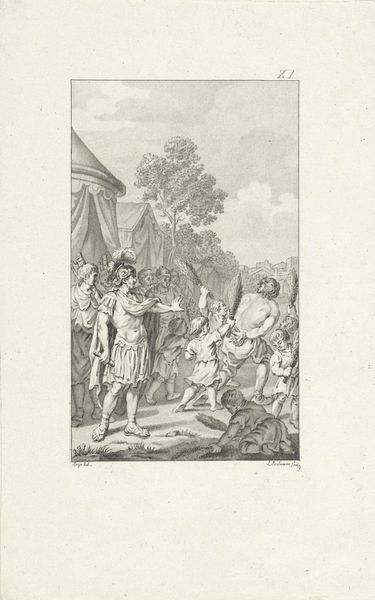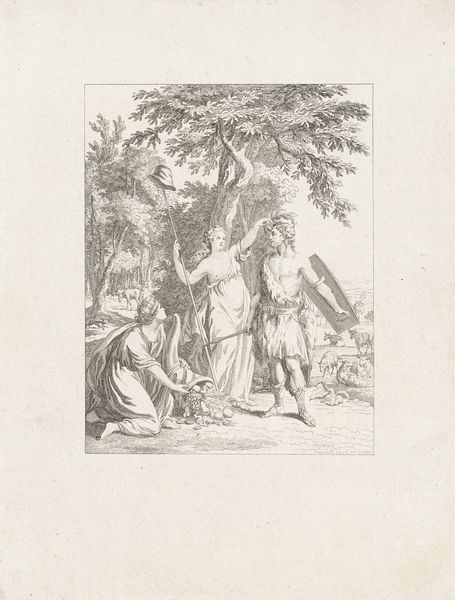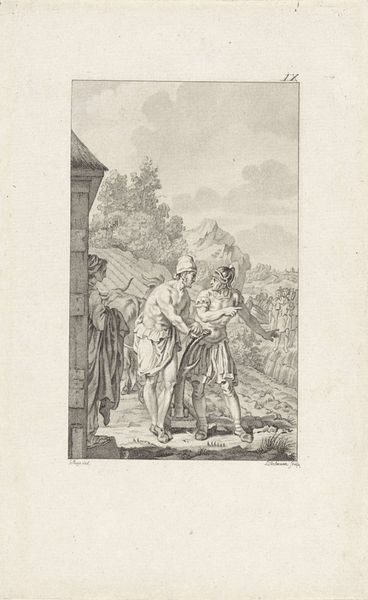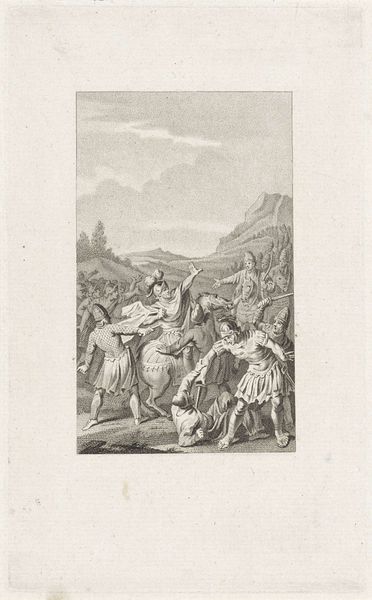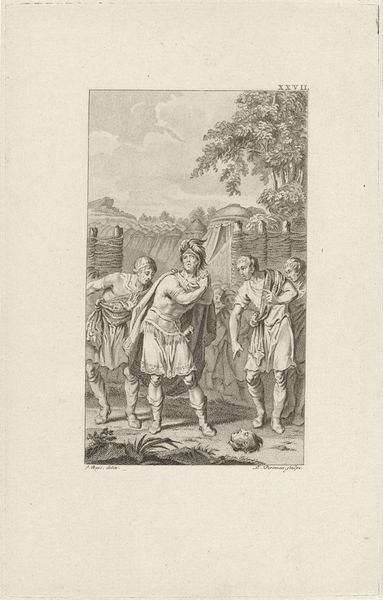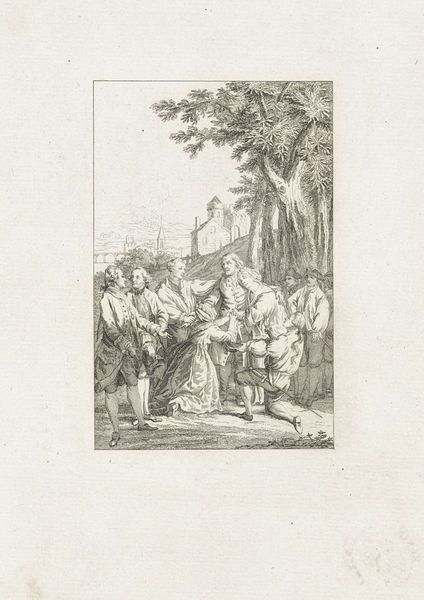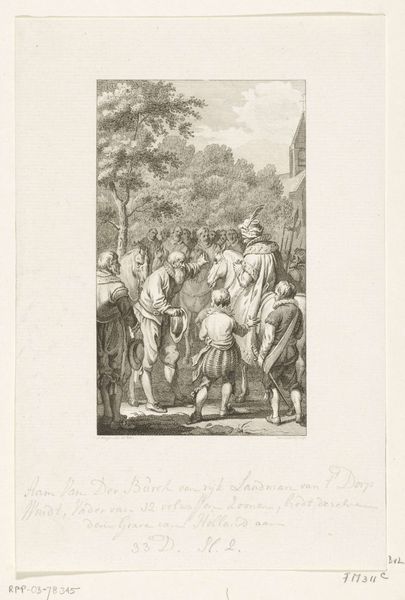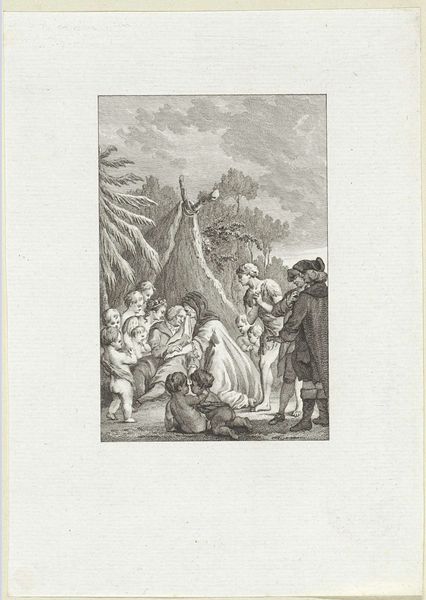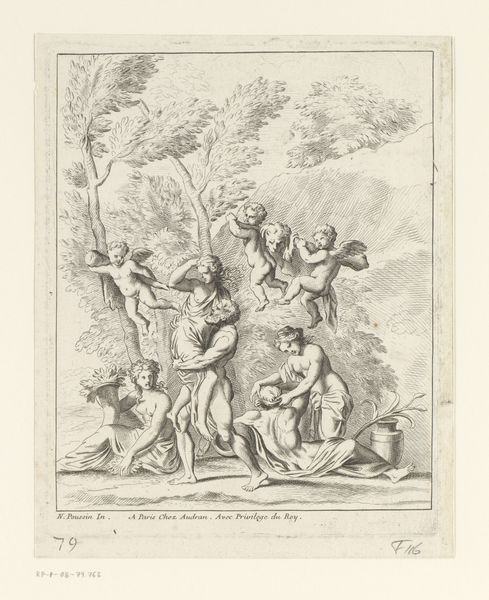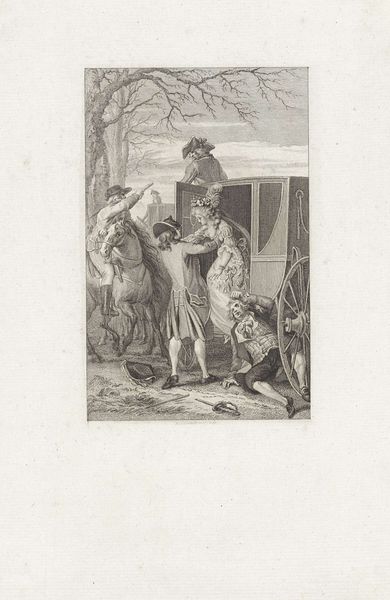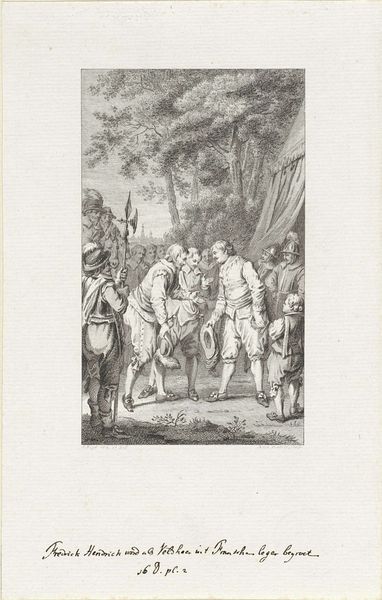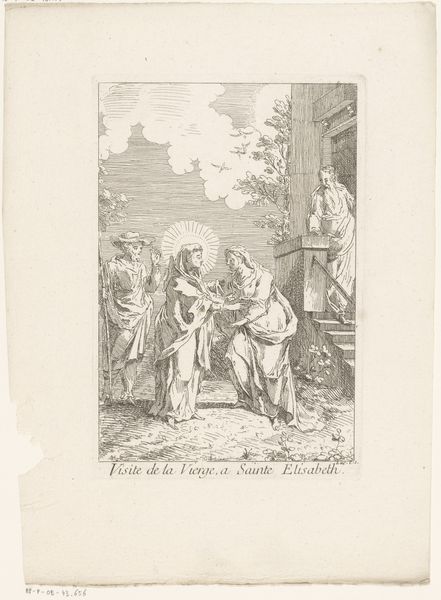
engraving
#
neoclacissism
#
narrative-art
#
old engraving style
#
figuration
#
form
#
line
#
history-painting
#
academic-art
#
engraving
#
realism
Dimensions: height 214 mm, width 144 mm
Copyright: Rijks Museum: Open Domain
Ludwig Gottlieb Portman made this engraving, Titus Manlius Torquatus laat zijn zoon onthoofden, using metal plates and paper. Engraving is a printmaking technique that relies on skilled labor and specialized tools. The artist carefully incises an image into a metal plate, often copper, using a tool called a burin. This requires immense precision and control, as the depth and width of the lines determine the darkness and intensity of the printed image. Ink is then applied to the plate, filling the engraved lines, and the surface is wiped clean. Finally, the image is transferred to paper under high pressure, resulting in a print with crisp lines and fine details. The linear quality visible in the artwork underscores the labor-intensive process of engraving. The stark contrast and precise lines create a sense of drama and moral weight, reflecting the story's theme of civic duty. By considering the materials and processes involved in its creation, we can appreciate the work as not only a narrative scene but also a testament to human skill and artistry.
Comments
No comments
Be the first to comment and join the conversation on the ultimate creative platform.
